 Most of us are feeling at least a little tired of all the snow, and are thinking more and more often about spring and sunshine. However, for some of us the change of season is much more noticeable because of the huge difference it makes in our mood. It’s normal to have a few days of low mood, but if it persists for most of the winter months and you aren’t motivated to do anything you enjoy then it may be something a little bit more. Seasonal affective disorder (also called SAD) is a type of depression that occurs at the same time every year. If you're like most people with seasonal affective disorder, your symptoms start in the fall and may continue into the winter months, sapping your energy and making you feel moody. Less often, seasonal affective disorder causes depression in the spring or early summer. What are the signs of SAD?
If you think you may have SAD it is important that you discuss how you are feeling with your health care provider. SAD is considered a type of depression, which can worsen and potentially lead to thoughts of suicide. If you are having thoughts of harming yourself or others it is of the utmost importance to seek medical help immediately!
What Can We Do About SAD? Light Therapy (phototherapy) has been shown to be a very effective treatment for reducing feelings of SAD. The specialized light box mimics natural light, which seems to have an effect on brain chemistry related to mood. Most people start to respond after 2 to 4 days and causes few side effects. Conventional Treatment: If symptoms are more severe then a combination of psychotherapy and medication (eg. Zoloft or Paxil), may be employed by your doctor. Generally a medication with the fewest side effects will be chosen, and your doctor may suggest beginning the antidepressant prior to the start of your symptoms each year. Naturopathic Treatment St. John’s Wort: has been used to treat mild to moderate depression. Some studies have found St. John’s Wort to be comparable to tricyclic and SSRI (fluxotine) with fewer side effects. SAMe: synthetic form of the same substance that is made naturally in the body from a reaction between methionine (an essential amino acid) and ATP, has been shown to alleviate depression as well as the pain of osteoarthritis. Melatonin. This natural hormone helps regulate mood. A change in the season may change the level of melatonin in your body. Omega-3 fatty acids. Omega-3 fatty acid supplements may help relieve depression symptoms and have other health benefits. Sources of omega-3s include fish such as salmon, mackerel and herring. Omega-3s are also found in certain nuts and grains and in other vegetarian sources, but it isn't clear whether they have the same effect as fish oil. Lifestyle Let the sun shine in: Open the blinds, trim a few branches, add a skylight if need be. Do whatever you can to allow more natural light into the home and office. Go outside: Try and get outside during the day when the sun is shining. Take a nice walk, sit on a bench, just try and get into the natural light more often. Exercise: Regular exercise has been shown through many studies to improve mood and relieve stress and anxiety. Mind-Body Therapy All of the following have been linked to decreased feelings of depression to varying degrees: - Acupuncture - Yoga - Meditation - Guided Imagery - Massage There is no one set formula for preventing SAD, but through proper treatment and working with your health care provider you can learn to manage this condition well. Talk to your Naturopathic Doctor today about getting assessed and treated if needed, and as always talk to your health care provider before beginning any new medication or supplement. References: Godfrey A. & Saunders P.R. (2010) Principles & Practices of Naturopathic Botanical Medicine: Volume I: Botanical Monographs. Central Nervous System, pg. 161-163. CCNM Press. Mayo Clinic. Diseases and Conditions: Seasonal Affective Disorder (SAD). http://www.mayoclinic.org/diseases-conditions/seasonal-affective-disorder/basics/definition/con-20021047 Murray M. & Pizzorno, J.. (1998) Encyclopedia of Natural Medicine (2nd Ed.). Depression, pg 377-400. Three Rivers Press.
0 Comments
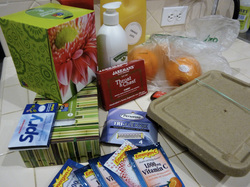 We are seeing more people, especially children, with allergies these days. There are several thoughts about why this is happening, but overall it’s generally described as a hypersensitivity or oversensitivity of the body to an external stimuli. One such theory referred to as the 'hygiene hypothesis' proposes that many children do not get sufficient exposure to a wide variety of microbes, and as result of growing up in an extremely clean environment devoid of microbes the body does not learn how to modulate the immune response effectively. Thus creating a situation where later exposure to a substance causes a hyperactive response, or allergy. There seems to be some credibility for this theory since the significant increase in individuals suffering from allergies has been mainly in the western hemisphere, and we have not seen a corresponding increase in other parts of the globe. However, as more countries become more affluent and the number of people below the poverty line decreases we are seeing an associated rise in atopic conditions such allergy and asthma there as well. In the US: · Number of people in the U.S. who have either allergy or asthma symptoms: one in five. · Percentage of the U.S. population that tests positive to one or more allergens: 55%. Internationally: The prevalence of asthma in different countries varies widely, but the disparity is narrowing due to rising prevalence in low and middle income countries and plateauing in high income countries. Symptoms: · Postnasal drip · Sniffling · Dark circles under eyes (allergic shiners) · Puffiness beneath the eyes · Restlessness · Fatigue · Poor sleep · Headaches · Behavioural problems such as irritability, hyperactivity, poor concentration, whining, and pickiness about food Chronic allergies, especially those that cause allergic rhinitis, a persistent inflammation of the mucous membranes lining the nasal passages, can lead to constant head congestion, decreased hearing ability, reduced concentration, and difficulty remaining alert. Children with allergies may frequently feel tired and irritable. Hyperactive behavior may also emerge as a result of allergies due to nervous irritability from chronic inflammatory response or the need to keep moving to stimulate endogenous adrenaline supplies. While a tendency towards allergies may be inherited, the extent to which they manifest may have more to do with dietary, emotional and environmental factors than genetic factors.
Suffering from allergies can be a very irritating experience. If you or your child is suffering from allergies, it is best to take them to a Naturopathic Doctor who can perform a proper assessment and form a treatment plan that will address your/your child’s needs. Always speak to your health care provider before beginning any new medications or supplements. References: 1. Allergy Statistics and Facts. WebMD. Reviewed by Johnson, K. (2012). http://www.webmd.com/allergies/allergy-statistics 2. Asthma Statistics. American Academy of Allergy, Asthma & Immunology. http://www.aaaai.org/about-the-aaaai/newsroom/asthma-statistics.aspx 3. Romm, A. 2003. Naturally Healthy Babies and Children: A Commonsense Guide to Herbal Remedies, Nutrition, and Health. Celestial Arts. 4. Skowron, JM. 2009. Fundamentals of Naturopathic Pediatrics. CCNM Press. Print.  Craving something chocolate and sweet but still has a twist of healthy to it this holiday season? Why not try out this Avocado Chocolate Pudding recipe. Great as a quick whip treat for yourself or double up the recipe to have enough for a party. Also works great with the kids with very picky taste buds. Recipe for Avocado Chocolate Pudding Ingredients 2 Tbsp cocoa powder 1 Tbsp virgin coconut oil 2 avocados 1/4 cup agave syrup, maple syrup, or honey (or any combination thereof) 2 tsp vanilla extract Feel free to play around with the recipe. For example, if you like a little extra spice then add a small amount of cayenne pepper. Found a unique combination you really like? Leave your recipe alteration successes in the comments. 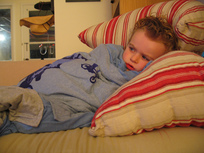 Cold and Flu season stats Over 200 different viruses cause influenza and influenza-like illness (fever, headaches, aches and pains, coughs, runny nose). Without doing lab testing, it is very difficult for doctors to determine the difference between the two. Both last for days and rarely lead to death or serious illness. According to a recent Cochrane review, the flu vaccine might only be effective against Influenza A and B, which represents about 10% of all circulating viruses (Jefferson et al, 2013). The authors’ conclusion from that review was, “Influenza vaccines have a modest effect in reducing influenza symptoms and working days lost. There is no evidence that they affect complications, such as pneumonia, or transmission.” (Jefferson et al., 2013). Period of contagiousness You may be able to pass on the flu to someone else before you know you are sick, as well as while you are sick. Most healthy adults may be able to infect others beginning 1 day before symptoms develop and up to 5 to 7 days after becoming sick. Some people, especially young children and people with weakened immune systems, might be able to infect others for an even longer time. How flu spreads Most experts believe that flu viruses spread mainly by droplets made when people with the flu cough, sneeze or talk. These droplets can land in the mouths or noses of people who are nearby. Less often, a person might also get flu by touching a surface or object that has flu virus on it and then touching their own mouth, eyes or possibly their nose. What Can We Do? There are many things we can do to help prevent illness throughout the winter season. Basic Strategies: 1)Eat fresh whole foods: Eating a variety of fresh whole foods including plenty of colourful fruits and vegetables is essential to proper immune function 2)Avoid refined sugars, trans fats and salt: These foods are known to weaken the immune system. 3)Increase your consumption of vitamin C containing foods: Vitamin C is known to boost immune function and help prevent cold and flus. Increase vitamin C containing foods such as: oranges, lemons, grapefruit, strawberries, raspberries, black currants, peppers, spring greens, brussel sprouts, broccoli, cauliflower, etc. 4)Eat more garlic and onions: Garlic and onions both have anti-viral and anti-bacterial properties, helping the body to fight off any germs it may come into contact with. (Raw consumption provides a greater benefit than cooked) 5)Drink up: Ensuring you are adequately hydrated will help enhance your immune system. Aim for half your weight in fluid ounces. (ex. If you weigh 150lbs, you should consume 75oz. of water a day) 6)Sleep, Sleep, Sleep: Ensure you are getting around 8 hrs of sleep per night and you are sleeping soundly. Too little non-restorative sleep is known to weaken the immune system. 7)Exercise: Engage in at least 20 minutes of physical activity per day. Exercise helps to increase circulation and lympathic flow, both of which help boost the immune system. 8)Breathe: Practice deep breathing exercises to help manage stress. High stress, fear, and worry can weaken the immune system, making you more susceptible to infections. 9)Wash hands: Wash your hands frequently using warm water and a natural anti-bacterial soap to prevent the spread of infection. 10)Cover your Cough: Cough or sneeze into your sleeve to prevent spreading infection and avoid touching your nose, mouth, eyes until hands are washed. Herbal Teas In a Harvard study, they found that people who drank 5 cups a day of black tea for 2 weeks had 10 times more virus-fighting interferon in their blood than others who drank a placebo hot drink. The amino acid responsible for this immune boost, L-theanine, is abundant in both black and green tea—decaf versions have it, too. Your optimal dose: Several cups daily. To get up to five times more antioxidants from your tea bags, bob them up and down while you brew.
Note: This information is not meant to replace the advice of a trained practitioner. In order to formulate a proper treatment plan, you should consult with your Naturopathic Doctor or other health care provider. Resources: Center for Disease Control and Prevention. (2013). Seasonal Influenza: Key Facts about Influenza (Flu) & Flu Vaccine. http://www.cdc.gov/flu/keyfacts.htm Hoffmann, D. (2003). Medical Herbalism: The Formulation and Preparation of Herbal Medicines. Healing Arts Press. Print. Jefferson et al. (2013). Vaccines to prevent influenza in health adults. http://summaries.cochrane.org/CD001269/vaccines-to-prevent-influenza-in-healthy-adults. Ontario Association of Naturopathic Doctors. (2013). Staying Healthy in Cold and Flu Season. http://www.oand.org/staying-healthy-in-cold-and-flu-season/ Public Health Agency of Canada. (Nov 2, 2013). Flu Watch: Influenza/ILI Activity (geographic spread). http://www.phac-aspc.gc.ca/fluwatch/13-14/w44_13/pdf/fw2013-44-eng.pdf 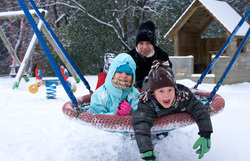 General tips for Immunity - Breastfeeding: breast milk contains lots of immune boosting ingredients - Wholesome foods: fruits, vegetables, multi-grains, protein - Avoid/Minimize, especially when sick: cold/cooling foods (dairy), sugar and processed or ‘junk’ foods - Getting enough rest, exercise and fresh air - Good hygiene (hand washing is most effective way to stop/reduce the spread of germs) - Reduce stress/ being in a stressful environment Fever What is a fever? - Fever is defined as a temperature above 38 C/100.4 F - If the fever is over 40C/104 F then you should see a doctor Guidelines for Dealing with a Fever - Children under 3 months of age don’t usually get a fever. If they do develop a fever, they should be seen by a doctor. - If over 3 months of age you can watch and wait. Fevers can be beneficial in destroying the virus/bacteria causing illness. However, if your child’s fever is causing you a lot of distress and worry, then talk to your doctor. Recognizing a Sick Child Generally Sick Child - Doesn’t look/feel well - Acts “different” than usual - Doesn’t want to eat - Sleeps a lot - Has common symptoms of illness Really Sick Child - (S)He stops playing - Is “lethargic” - Has unusual or worsening symptoms - Doesn’t get better after a reasonable amount of time for a given illness - Is not drinking fluids - Is not responding well - Has seizures - Is losing weight or a lot of body fluids - Mom (or dad) feels that “something is wrong” Warning Signs of Very Sick Kids - Persistent fever (>3-5 days) with no improvement - Stiff neck - Forceful vomiting - Severe/unremitting headache - Incoherence or unresponsiveness - Deterioration of symptoms - Visual disturbance - Severe facial pain - Painful breathing; difficulty breathing - Persistent sore throat (>3-5 days) with no improvement - Drainage (fluid) from the ear - Dehydration; unwillingness to accept fluids - Any signs of illness/infection in children under 6 months old - Signs of serious illness: such as measles, whooping cough, pneumonia, and meningitis What to do when Your Child is Sick Diet: - Breastfeeding - Generally light foods. Broths and soups are best with some steamed vegetables, fruit or soupy grains based on the child’s hunger level. - Plenty of fluid, especially water and tea, to prevent dehydration - Avoid sugar and refined or processed foods - 1 tbsp Honey (avoid if less than 1 year) Nutritional Supplementation: - Vitamin D, Zinc, Vitamin C, Vitamin A, Essential Fatty Acids, Protein Baths (Hydrotherapy): - Tepid (neither hot nor cold) baths are good for bringing down fever - Don’t use ice baths or alcohol to bring down fever. This can actually cause temperature to increase instead of decrease. - “Magic socks”: take a pair of cotton socks and wet them with slightly cool water, and wring them out as best as possible. Then place on child’s feet and cover with another pair of thicker, woolen socks before bed. Leave on overnight. Ear Infections Signs to Watch For: - Irritable, pulling on their ear/scratching at their ear - Ear may appear red and slightly swollen - Fluid may drain from the ear - If child is talking, may complain of pain - Other possible signs include: fever, headache, cough, runny nose, vomiting and diarrhea What to Do: - Breastfeeding - Avoid allergenic/inflammatory foods: peanuts, dairy, soy, wheat, corn, oranges, tomatoes - Generally light foods. Broths and soups are best with some steamed vegetables, or fruit based on the child’s hunger level. - Plenty of fluid, especially water and tea, to prevent dehydration (particularly if fever is present) - Ear drops: olive oil infused with garlic. Let garlic pieces sit in olive oil overnight, and use a dropper to place drops in ear. Some companies (eg. St. Francis Herbs) make ear oils for purchase in health stores. - Supplements: Vitamin C, Probiotics, Zinc, B vitamins and cod liver oil (Vitamin A) Flu Signs to Watch For: - fever (often high) - headache - extreme tiredness - dry cough - sore throat - runny or stuffy nose - muscle aches - Stomach symptoms, such as nausea, vomiting, and diarrhea, also can occur, but are more common in children than adults What to Do: - Similar treatment as discussed in Fever section, especially Diet and Bath - Teas: Chamomile, Spearmint, Elder, Lemonbalm, Mullein, Ginger - Natural cough syrup as needed, preferably at night time so they can sleep but can still cough up anything they need to get out of their system during the day. Note: Specific treatment suggestions are best discussed with your Naturopathic doctor as each child and illness is often unique! References: 1. "Fever in Infants and Young Children: Problems in Infants and Very Young Children: Merck Manual Home Edition." Fever in Infants and Young Children: Problems in Infants and Very Young Children: Merck Manual Home Edition. N.p., n.d. Web. 28 Nov. 2012. <http://www.merckmanuals.com/home/childrens_health_issues/problems_in_infants_and_very_young_children/fever_in_infants_and_young_children.html>. 2. Romm, A. (Oct 2012). Winterize Your Kids: Optimizing Health with Herbs, Diet and Common Sense. Webinar Notes. 3. Schmidt, Michael A. Healing Childhood Ear Infections: Prevention, Home Care, and Alternative Treatment. Berkeley, CA: North Atlantic, 1996. Print. 4. Skowron, JM. 2009. Fundamentals of Naturopathic Pediatrics. CCNM Press. Print. 5. Solomonian. L. (2012) Getting Sick Well. Unpublished lecture notes. CCNM. |
Sarah Connors
I am a Naturopathic Doctor and Doula providing care in the Kitchener-Waterloo area. I have a passion for helping people with their health issues and improving the birth experience for Moms, and their babies. I also have a life long love affair with soccer, curling, and the alto saxophone. Archives
November 2020
Categories
All
|
Photos from Rural Royalty, manu flickr2010, Ryan Dickey, wocintechchat, huskyte77, paulswansen, Black Room Photography, harum.koh, Emery Co Photo, JeepersMedia, BrownGuacamole, wellnesswildflower, JeepersMedia, vastateparksstaff, colindunn, seelensturm, /\ \/\/ /\, 50mm.za, The Simpsons (Lee, Shirley, Luke and Rachel), AGRONAUTI, aivas14, Jonathan Rolande, winnifredxoxo, juhansonin, osseous, nan palmero, Theo Crazzolara, brianfagan, TP studio, wuestenigel, torbakhopper, anka.albrecht, Michael Stern, [-ChristiaN-], franchiseopportunitiesphotos, terren in Virginia, nateOne, barnimages.com, Dun.can, wuestenigel, @lattefarsan, amandabhslater, aphrodite-in-nyc, nutritionaldoublethink, Anne Worner, donnierayjones, mikecogh, angeloangelo, Rob.Bertholf, getaiwan, Lida Rose, matsuyuki, SurFeRGiRL30, marcoverch, amsfrank, mdaltry, nutrition education, Mike Prince, Edsel L, Neighborhood Nini, philipp.alexander.ernst, Mediocre2010, homethods, quinn.anya, Gamma Man, katerha, Eric Kilby, National Institutes of Health (NIH), rcmd_cfdfw_5_2, curtis palmer, Ray in Manila, frankieleon, Airsoftpal.com, byzantiumbooks, cchana, Brian Legate, Matt Lavin, BradHinton, monpetitchouphotography, wuestenigel, alexisjordanlewis, ByEPhotos, erix!, RLHyde, return the sun, quinn.anya, mliu92, frankieleon, loudista, Lyn Lomasi, upslon, derrickbrutel, cchana, National Institutes of Health (NIH), watts_photos, marcoverch, derrickbrutel, francesbean, weegeebored, Airsoftpal.com, Etwood, wu_135, shixart1985, Ingrid Taylar, VeritasFotografie, BioDivLibrary, emmanuelmorales1, Thanks for 1.5 Million Views!!, Will Merydith, reader of the pack, RoxyHobbs, Khanelle Prod' Medias, storyvillegirl, agromonitor, Arenamontanus, six:eleven, cote, SweetOnVeg, nenoirenediaz, lucianvenutian, markhillary, anotherlunch.com, inkknife_2000, archibald jude, rawtrigger, Imaginary Museum Projects: News Tableaus, Pavel P., Courtney Emery, Thien Gretchen, physiognomist, bark, Michigan Municipal League (MML), alberth2, Merelymel13, neofob, Care_SMC, Parker Knight, B*2

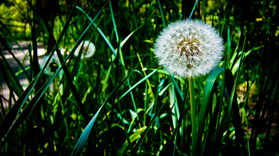
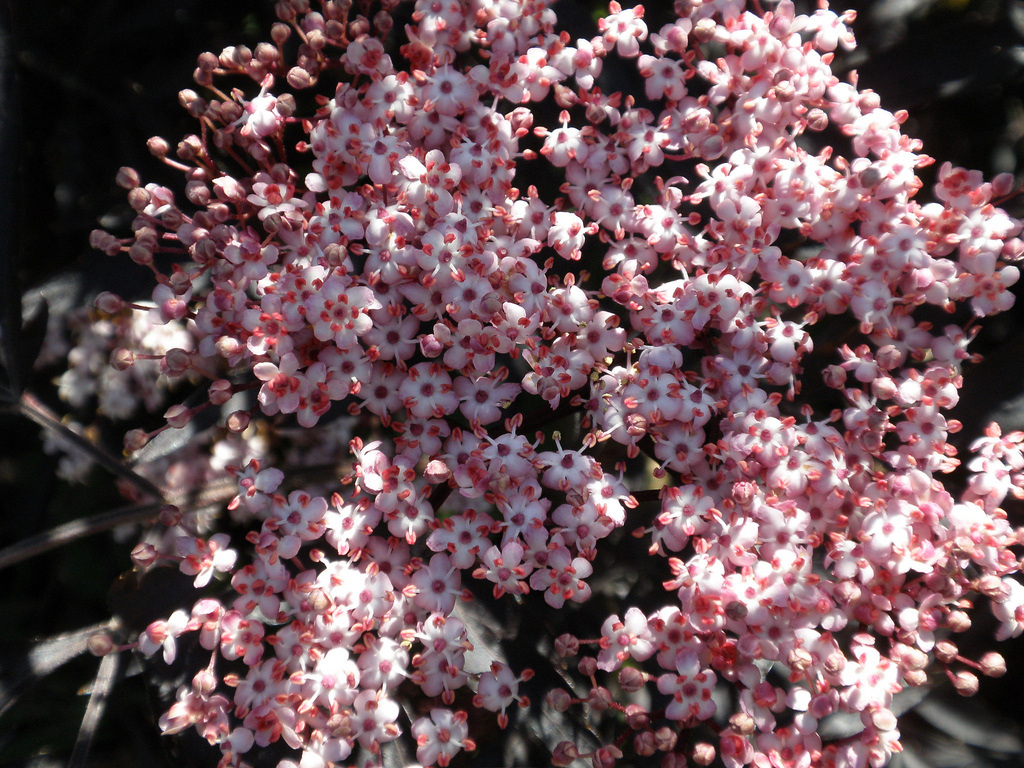
 RSS Feed
RSS Feed
